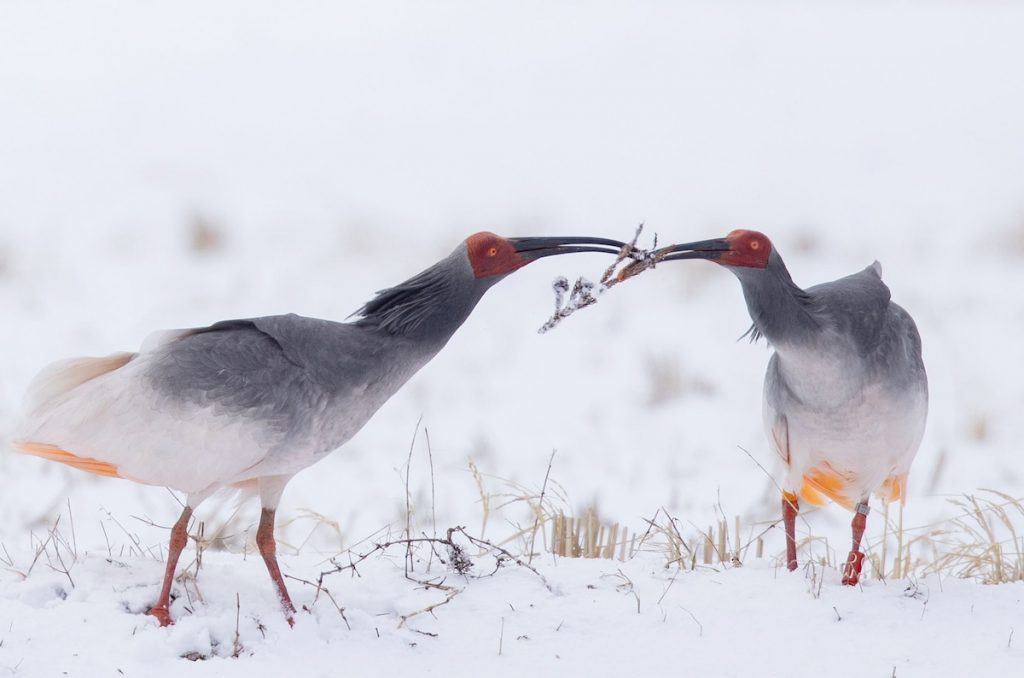このページを 日本語 で読む
The cold winter and snow linger on Sado Island. But the crested ibis have already begun to engage in courtship behavior. The birds can be seen grasping small branches with their beaks to offer to favored mates.
Branches a Sign of Affection
As the crested ibis enters its mating season, its feathers darken. In early February, the ibis is now sporting dark gray feathers colored by a powdery substance excreted from its skin. During this time of year, the birds can be seen presenting potential mates with branches.
The birds generally break off small branches or twigs when perched in trees. Or when on the ground, they pick up fallen leaves to offer to a favored mate. The recipient of this courtship behavior, the female ibis, accepts the twig if interested. Once a couple is formed, they begin to exchange branches with each other frequently.
If the female is not interested, she will refuse the offer of a branch from a male. In the photo above, the female ibis is still young. She has not yet entered the breeding season, and her feathers have not darkened. Despite the male's earnest courtship, he ends up ignored.
Behavior among Same-Sex Birds
Exchange of branches is not just a part of the breeding ritual. It occurs not only between birds of the opposite sex but also from male to male and female to female. The behavior is thought to be a display of affection.
Ibis appear to be quite affectionate creatures. They offer each other branches and twigs even outside the breeding season. Capturing the action on camera can be challenging as the behavior is spontaneous and happens without forewarning.
What About the Branches?
So what happens to the twigs and branches? Actually, these gifts end up being discarded. The significance of the behavior appears to lie not in the branch itself, but in the repeated act of giving and receiving, which enhances affection.
Storks inflate their red throat pouches and clack their beaks. Dance is how the red-crowned or Japanese crane (tancho), designated a special natural monument, attracts a mate. Many birds such as doves, cuckoos, woodpeckers, hawks, and parrots, exhibit behaviors where the male passes food to the female mouth-to-mouth. Courtship behaviors in birds are truly varied.
The crested ibis has yet another interesting mating behavior – called pseudo-copulation. The male repeatedly mounts the female without actually mating. Eventually, the birds form a couple and breed.
During pseudo-copulation, the birds issue a unique cooing mating call and vigorously shake their heads while tapping their beaks together. Come to think of it, this behavior is not unlike that of humans, who may go on multiple dates before choosing their mates.
Click here to read more Sado Wildlife in Focus photo essays by photojournalist Fumie Oyama.
Fumie Oyama is a two-time winner of the Japan Newspaper Publishers & Editors Association Award as a photographer for the Sankei Shimbun. After covering the reintroduction of the crested ibis to the wild for 11 years, Oyama left the company in 2020 to move to Sado Island. There, he continues to photograph the ibis and other wildlife while engaging in farming. He currently promotes the charms of Sado Island as a photojournalist. Follow Fumie Oyama on Instagram.
このページを 日本語 で読む
